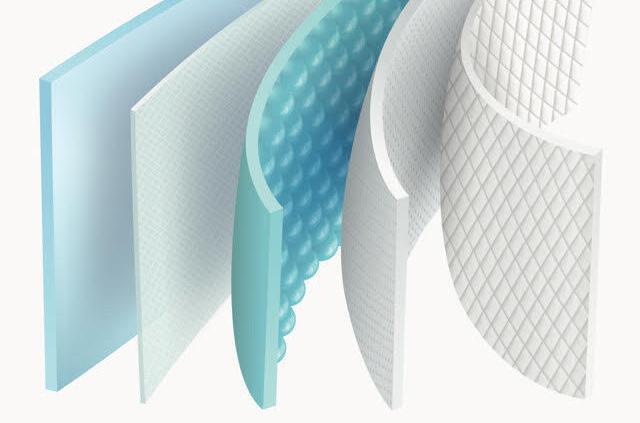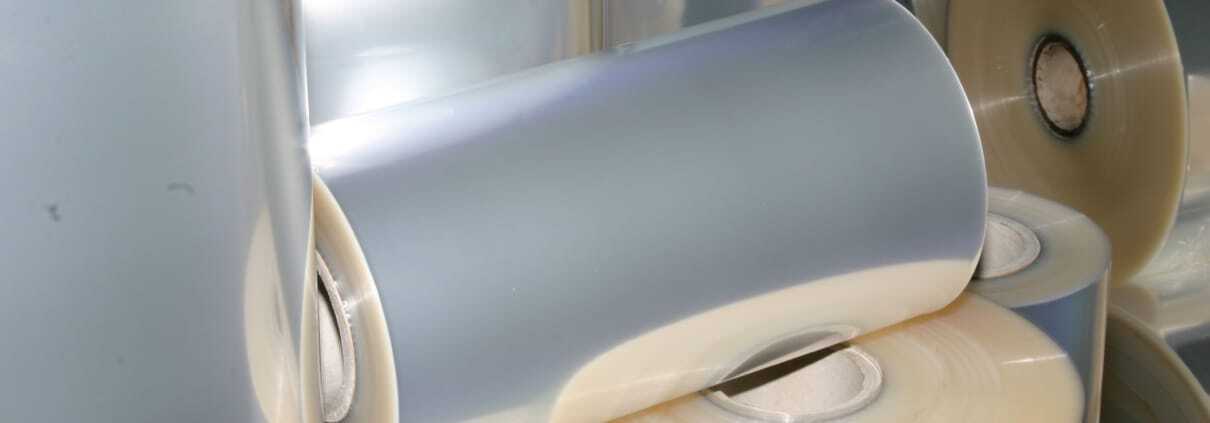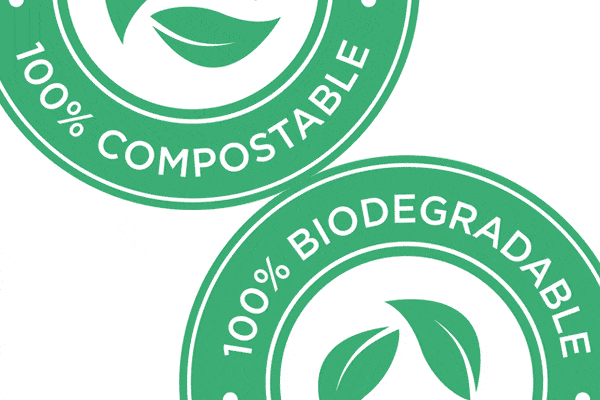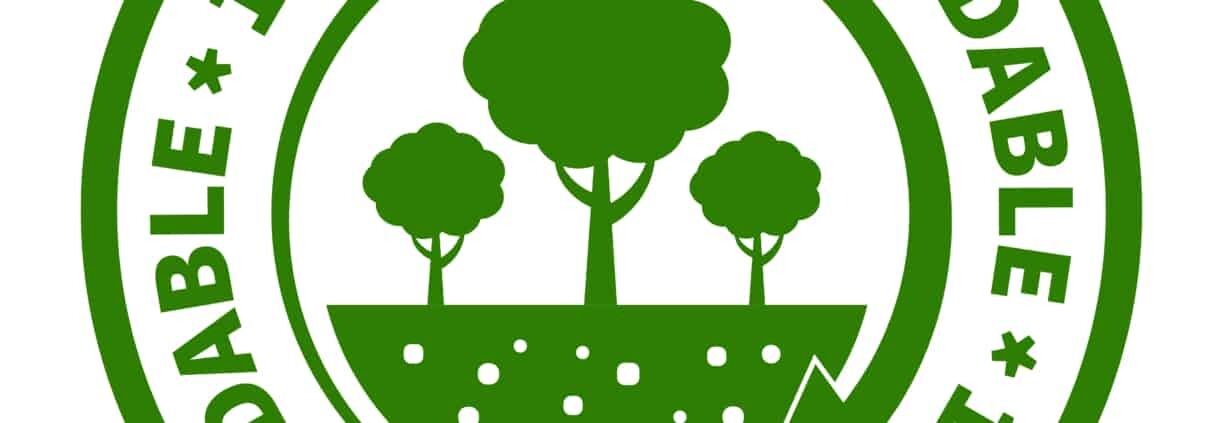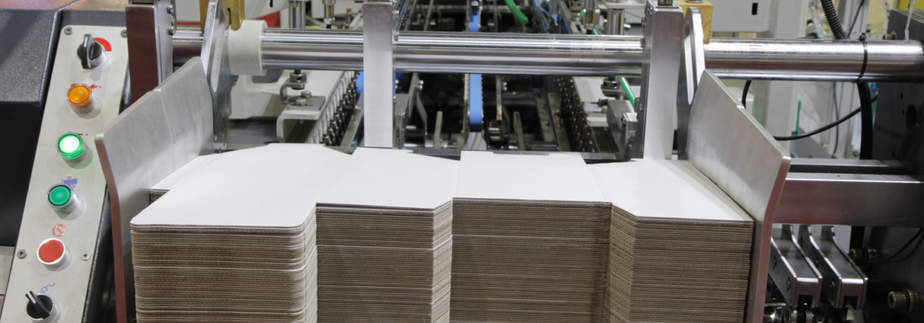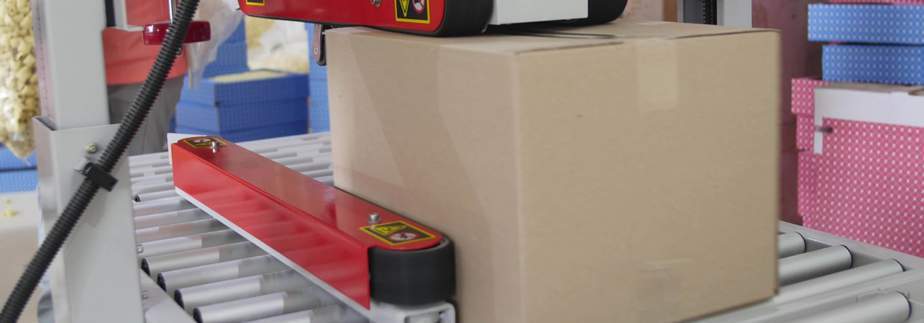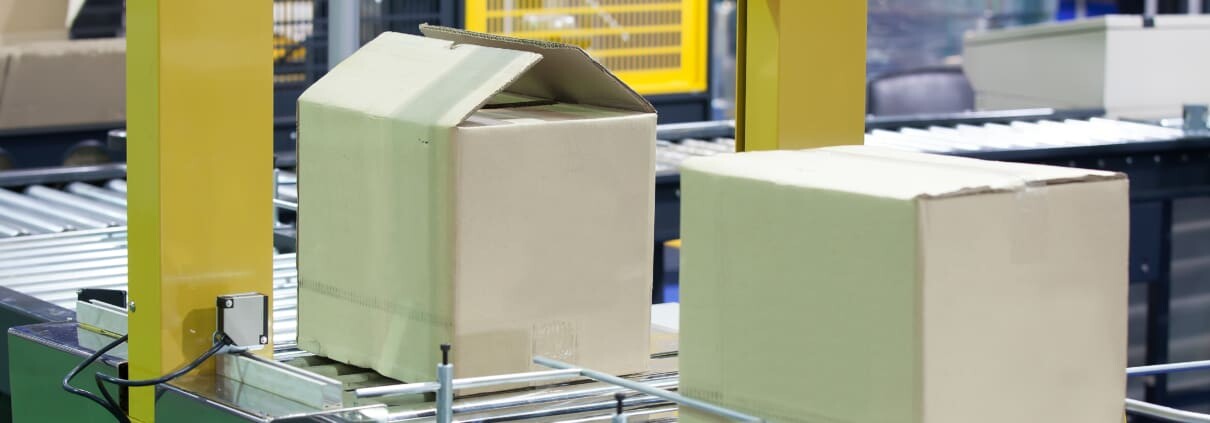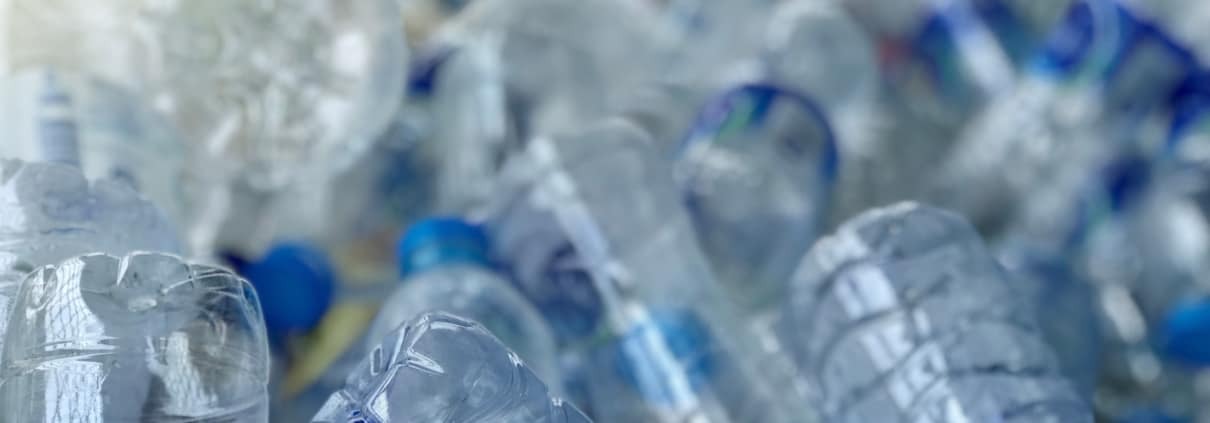Adhesives and sealants in the packaging and paper industries
Adhesive for plastic substrates in filter elements
In most industries liquids and gasses are filtered for various purposes and reasons. A wide variety of filtration element types have been developed, all with slightly different properties. These filters or cartridges have become increasingly high-tech over the last decades. Unsurprisingly, more complex structures also require more specialized adhesives and sealants.
Part of the problem is the fact that these products must incorporate a growing number of properties to perform their tasks. Let’s look at a few typical requirements.
The adhesive or sealant must be viscose enough for controlled application, but also fluid enough to maintain a proper and predictable flow during application. Picking an adhesive with the correct thixotropy can greatly prevent application issues during manufacturing.
When used as a bonding agent, that bond must be strong enough to serve its purpose, while also being able to withstand rigorous manual or chemical cleaning methods. And, when the unit is discarded, the unit or parts of it must be recyclable in a manageable way, or biodegradable.
Another vital quality is food safety. Many of these filtration systems are used in industries that process food or beverages, or are part of water purification systems. It goes without saying that every part that comes into contact with food or beverages must be absolutely safe.
Your company requires a high-tech, strong bonding adhesive sealant that is safe for use in the food & beverage industry? Contact us for more information.
Food-safe adhesive for filter elements
Adhesives and sealants made for use in the food and beverage industry preferably don’t contain plasticizers. Using a safe, natural ingredient like castor oil as a base makes a lot of sense.
Castor oil is a natural vegetable oil that is used in a wide range of beauty products and for a number of medical applications. Aside from its boasted useful antimicrobial and antiinflammatory properties, it can also serve as a perfect basis for a number of products, suitable for use in the food & beverages industry, as well as in other applications.
With rules and regulations becoming stricter every year, it can be increasingly hard to find your way in the growing market of adhesives. More so, when these adhesives have to be environmentally friendly and comply to health & safety regulations. This is exacerbated by the fact that every application has its own specific requirements.
Polyurethane adhesive for plastic substrates in filtration cartridges
We often see there is a wish for adhesives that also act as sealants. A typical usage is the manufacturing or assembly of spirally wound filtration membranes or other replacement filter elements, i.e., for filtering of water, dairy products, and beverages.
A two-component polyurethane sealant for plastic substrate components would be a sensible choice. The combination of high strength bonding and permanent elasticity allows for a wide range of applications with only one product. This is a great way to simultaneously streamline your production method and cut costs.
Not just any polyurethane sealant will do. When it comes to filter elements for the food & beverage industry, the adhesives and sealants must be fully compliant with the NSF/ANSI standard 61. Using an unsuitable alternative could lead to undesirable or even unsafe results.
Application suitability, thixotropy and regulations aside, there may be other things to consider as well. Mixing ratios and methods spring to mind, as well as curing times and conditions.
In relation to shipping and compatibility with your production process, you might want to know if it is available in the package format of your preference, like IBC totes or drums.
Looking for an adhesive with specific properties?
adhesives+coatings is specialized in finding the best eco-friendly adhesives and sealants for existing and developing niches. Contact us and we will guide you towards the perfect solution for your requirements.
Rules and regulations regarding packaging are becoming stricter by the year. Costumers demand a wider choice in products with eco-friendly packaging. The industry must comply or perish. Unfortunately, complying is complicated by the fact that the adhesives used in heat seal packaging have always held back the biodegradability of the entire packaging waste disposal.
How to find the best heat sealant for plastic that is also bio-degradable? How to continue using heat seal food packaging while, at the same time, introduce or expand the use of environmentally compostable materials? AdhesivePlatform can help you find your way in the maze that is heat seal packaging adhesives.
Heat seal adhesives, both blessing and curse
The use of heat seals is well established in the packaging industry. And for a good reason. They help keeping liquids and foods protected against microbes and other contaminants, for as long as the product can be stored.
Heat seal equipment is relatively uncomplicated and can be used with and without a sealing adhesive. Some methods only use heat and/or pressure, to seal or weld two or more layers of matching thermoplastics together. Others use a substrate that has been coated with a thermoplastic heat seal adhesive, possibly applied months before the actual filling and sealing takes place. This can then be shipped and stored until needed, ready for use at the filling line in moment’s notice. This simplifies the logistics involved.
The drawback of traditional plastics and adhesives
Unfortunately, over the last decades we have become aware that the versatility and relative strength of plastics – so favored by the packaging industry – also has a very nasty drawback. We find micro plastics and plastic pollution in soil and marine environments all over the planet, forming a threat to the health of safety of every living thing. This is precisely because of the fact that many types of plastics are relatively indestructible. The call for biodegradable materials has never been louder, and any progressive industrial would do wise to take notice.
Biodegradable heat seal adhesive
The image of the entire packaging industry has improved due to an increasing usage of biodegradable packing materials. Though definitely an improvement, it’s only one step in the right direction. The growing use of eco-friendly adhesives is another.
It is wonderful that the heat seal bonding market is currently experiencing a shift towards biodegradable heat seal adhesives too. Overlooked for a long time, adhesives make up a significant part of packaging waste, often being part of the reason that recycling processes are not as successful as they could be. With only part of the package being biodegradable, the entire package still can’t be treated as 100% biodegradable waste.
Biodegradable heat seal adhesives are versatile
These eco-friendly adhesives are suitable for all paper, biofilm and fiber-based materials commonly used in the packaging industry. The application is the same as their non-biodegradable brethren: either hot melts or liquids are applied to the substrate and let dry. Much like a pressure sensitive adhesive, the heat seal glue forms the final bond when exposed to heat and pressure at the filling and sealing line, hence the name “heat seal”.
Benefits of biodegradable seals in packaging and paper
It goes without saying that the greatest benefit of biodegradable heat-sealing adhesive systems is their environmentally-friendliness and plastic-free formulation. Nevertheless, the heat seal glue brings along also other benefits including:
- No micro plastic pollution: biodegradable heat seal adhesives break down into CO2 and valuable nutrients.
- Cyclic process: the nutrients can be used to enrich soil and promote farming activities, reducing landfill sites in the process.
- Compliance with national and international regulations: many countries have regulations in place to encourage the use of biodegradable heat seal glue. The UK Plastic Pact, to name one, states that all food packaging must be 100% reusable, recyclable or compostable by the year 2025.
- Meeting consumer and brand owner demands: consumers and brand owners are increasingly conscious about the environment, aiming at eliminating plastic pollution from their respective grocery lists and production lines, and willing to replace them with sustainable, eco-friendly packaging.
Eco-friendly heat seal adhesives are not a gimmick
Biodegradable adhesives are very much accepted in the packaging industry, and recognized for their valuable properties. Their compostability is measured against a number or standards. One such standard is the European Norm EN 13432, which evaluates the adhesive or seal on four factors: biodegradation, disintegration, ecotoxicity and heavy metals. Passing these four tests means the heat seal adhesive is biodegradable according to the standard as presented in the following table.
| Test | Biodegradable if… |
| Biodegradation | 90% of the total mass of the adhesive is converted to CO2 within 180 days |
| Disintegration | The germination rate and plant biomass in the compost are more than 90% of those in the corresponding blank compost |
| Ecotoxicity | The products of adhesive composting process can be used to enrich soil or are not harmful to plant growth in the area |
| Heavy metals | The heavy metals in the heat seal adhesive do not exceed the strict limits set in the standard |
Find a supplier of biodegradable adhesives
Biodegradable heat seal adhesives allow for compostable and plastic-free food safe packaging, reducing the global microplastics pollution. Contact us if you want to know more about biodegradable adhesives and specialized suppliers.
Laminated film for paper, foil and nylon bonding
In the paper and packaging industries, laminating film is applied to surfaces such as paper, cardboard, aluminum foil and biofilm. The purpose of laminating film is to provide food and non-food packaging with barrier properties, improved appearance and haptic properties which contribute to the “feel” of a surface.
Laminating films and applications exist as numerous types. Each of them suitable for specific processes. BOPP, nylon and PET laminating film applications are the most common. The different lamination film types are generally suitable for wet bonding and thermal lamination film applications.
Lamination: how to laminate paper, meaning and film types
Adhesive lamination is the process of joining two or more flexible webs together assisted by a bonding agent, usually an adhesive. The substrates making up the webs can be paper film, biofilm or aluminum foil. The adhesive is applied to the less absorbent substrate, and the other web is pressed on it to create two layer laminate.
Lamination exists primarily as two different processes which both use special films made for them: wet lamination and thermal lamination. Here we will take a closer look at the wet lamination and thermal laminating films.
• Thermal laminating film – Dry bonding
In a thermal lamination film application (also known as hot film application) the substrate is coated with an adhesive or resin which has a low melting point. This allows the film to be applied using merely heat and pressure. Dry bonding is used in thermal lamination film application, meaning that the adhesive is activated prior to combining the substrates to be bonded
Thermal laminating films are available in different finishes, ranging from matte to high gloss depending on the material the film is made of. They exist as BOPP materials and PET films, as will be explained later on. Thermal lamination films are used for example in book lamination film applications and to laminate magazines, diaries and other printed and unprinted laminate paper products.
• Wet lamination films – Wet bonding
Wet lamination films are used for laminating two substrates, of which one is porous. Also wet lamination films exist as BOPP and PET films. The wet films are suitable for conventional lamination done with dispersion, solvent-based, UV or hotmelt adhesives. The final wet bonding takes place as the substrates are brought together and the adhesive between them is let cure.
These films often have excellent anti-static properties and they are suitable for high speed lamination. Wet laminating films are used for carton and paperboard box lamination as well as document lamination and unprinted paper and packaging.
• Wax lamination
In the wax lamination process, the bonding agent is a wax or a hot melt adhesive which is applied in a molten state to one of the substrates. As a result of the ongoing shift towards greener and recyclable packaging, biodegradable hot melt adhesives have been developed.
The wax lamination process allows for production of paper-paper and paper-aluminum foil laminating, which is common in the packaging of cookies and bakery products.
• Solventless lamination
Another response to the increased demand for more environmentally friendly packaging is provided by solventless adhesives in document lamination processes. Solventless lamination is realized with adhesives that do not contain any solvents. The solventless adhesives are usually multi component systems which curing process starts as the components react with each other.
This laminating film application allows for fast pased production as the adhesive does not require drying.
Lamination film types by lamination material
Laminating films used in the paper and packaging industries come in many types, the three most common lamination film types being: BOPP, PET and nylon. These three differ from each other when it comes to the applications, price and finish. Our experts can further help you choosing the best laminating film for your packaging!
• BOPP lamination film – Biaxially oriented polypropylene
In BOPP materials, the base material is biaxially oriented polypropylene. The lamination is realized by extrusion coating an adhesive on the film and either wet or dry bonding it to the substrate. The film has the properties of a BOPP film on wide side, and the those of the adhesive on the other.
BOPP films are available in various shades and finishes such as matte, silky satin and high gloss. The film contributes to the finished product´s looks and feel. The film creates and excellent moisture barrier which is resistant to chemicals.
• PET laminating film – Biaxially oriented polyethylene terephthalate
Another popular, yet little more expensive laminating film is based on biaxially oriented polyethylene terephthalate – PET. The PET laminating films are also known as polyester films. The PET laminating film is generally used for two-sided printing.
PET films are available as matte and gloss finishes. They are used for instance for menu cards and identification cards with magnetic strips.
• Nylon laminating film – Biaxially oriented nylon-6
Compared to BOPP and PET films, the nylon laminating films are more expensive. However, they have unique properties such as abrasion resistance and are therefore used for example for book covers and jackets. Nylon laminating film is a type of thermal lamination film applied through dry bonding.
Choose the best laminating film for your product
The lamination films are divided into groups by the process and by their base materials: BOPP, PET and Nylon laminating film. However, within these groups there are numerous different types of products which all have their special properties. Therefore, choosing the best laminating film for a specific project is not an easy job.
When choosing a laminating film, consider the following:

- Environment: the laminating film will be directly exposed to the environment in the finished product, whether it is the laminate paper cover of a book or an adhesive lamination for a package a perfume. Therefore, for example the exposure to sun, chemicals and heat should be considered.
- Ease of lamination: when it comes to ease of lamination, the thickness of the lamination material plays a great role. Thick films are often used for laminating graphics, which need to lay flat and remain so. In turn, thin films are preferred on curved and uneven surfaces.
- Quality of the film: it goes without saying that investing in good quality is costly. However, in any type of lamination, high quality is worth every penny, as a poor quality film can damage the product rather than protecting it.
- Adhesive: the adhesive of laminating film affects the appearance of the finished products. It is also the substance in direct contact with the substrate. Therefore, the adhesive should be chosen based on the desired looks and the requirements of the substrate.
Need help to find the right lamination film?
In case you are unsure which laminating film is the best for your product and process, do not hesitate to contact us. Our experts are happy to share their expertise with you, and help you find the system that benefits your product the most.
Hot melt adhesives are not a new thing. They’ve been around for over half a century now, becoming increasingly versatile and cost-effective. There is an HMA for practically every application on the market. In recent years, the industry has voiced the need for a new development: compostable hot melt adhesives.
Hot melt adhesives are not going away
In modern industrial applications, few adhesives are so commonly used as hot melt adhesives. Their uses seem endless, due to their wide variety. Hot melt glues can be used for the assembly of your cardboard or corrugated boxes and closing the flaps at the end of your packaging line.
HMA’s are used in the wonderful world of electronic devices, where a myriad of uses has been found for assembly lines as well. Hot glue is used as an insulator or fixation on electronics boards and in molded data cables. Once assembled and packed, their packaging is generally sealed with some type of hot melt adhesive as well.
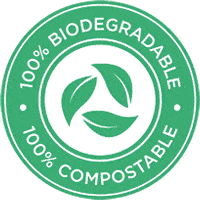
The woodworking industry uses hot melt adhesives for a number of things. Think of profile-wrapping a decorative layer on cabinet doors, for instance. Those doors are probably made from laminated wooden panels, which were probably laminated using hot melt glue too. And to assemble their furniture, that same shop may use yet another type of hot melt glue.
Are you putting things together? Click here and let us help you.
Compostable hot melt adhesives
Matrasses, furniture, toys, electronics, etc. Hot melt glues are abundantly in use, all over the world. You might be forgiven for thinking that the adhesive is only a small – admittedly important – part of the completed product or package. But the law of large numbers dictates that a little bit of every product adds up to a huge amount of glue in total. And if that glue is not biodegradable, the entire product won’t be either. Even if the rest of the product was made from biodegradable or recyclable materials.
Traditionally, hot melt adhesives are petroleum based. Keeping the same wonderful properties while developing biodegradable hot melts proved a pretty hard nut to crack, so we kept using the old stuff. Understandably so, but not anymore.
Today we can start closing the circle. We do not only have biodegradable hot melt adhesives, but even compostable hot melt adhesives are available on the market today.
Compostable hot melt adhesives are the future
We know our way around in the business of adhesives. It is important to keep in mind that there is a huge benefit in it for all of us. If you start using compostable hot melt adhesives, along with compostable product materials and packaging, think of how much material we could save from the landfills.
The industrial world is increasingly capable of building and maintaining a circular economy. Use eco-friendly materials and methods in your production facilities and we might make the world a little better, sooner than you think. Let’s continue this journey by reverting to compostable hot melt adhesives!
You must be warming up to compostable hot melt adhesives by now. Click here to find the proper one for your application.
Pressure sensitive adhesive enables compostable labels and tape
The packaging industry has lately been adopting more sustainable processes and greener materials. This is due to national and international regulations, buyers ́ desire for eco-friendly products and general trend towards increased use of renewable materials. This has led to development of PSA adhesive (pressure sensitive adhesive) that allows for compostable labels and tape.
Motivation for biodegradable adhesive labels and tape
Increased plastic pollution in soil and marine environments as well as micro plastic pollution have encouraged development of compostable chemistries. Compostable PSA adhesive allows for biodegradable adhesive tape and labels in, for example, food packaging.
Benefits of pressure sensitive tapes & labels with compostable PSA adhesive
PSA adhesives have long traditions in producing pressure sensitive tapes and labels. Pressure sensitive adhesive is non-reactive, and additional pressure activates the bonding properties. The activation does not require heat, water or solvents, which makes pressure sensitive adhesive tape and labels ideal for fast paced production.
Superior sustainability of biodegradable adhesive labels and tape
PSA adhesive for compostable labels and tape has the advantage of being even more environmentally-friendly than the conventional adhesives for labels and tapes. Compostable adhesives use natural polymers which can be broken to CO2 and nutrients either in industrial or domestic composting processes. The benefits brought along by compostable pressure sensitive adhesives include the following
- No micro plastic pollution: as compostable PSA adhesives break into CO2 and nutrients, the process does not result in micro plastic pollution.
- Recycling materials: the nutrients that result from the composting process are suitable for enriching soil and promoting farming activities. They can also reduce the use of landfill sites.
- Meeting consumer and brand owner needs: consumers and brand owners are ever-more conscious about the environment. Many aim at eliminating plastic pollution and replacing plastics with biodegradable materials and products such as labels and tape.
- Compliance with national and international regulations: also regulations set for packaging are changing towards sustainability: for example the UK Plastic Pact states that all food packaging must be 100% reusable, recyclable or compostable by 2025. This includes labels and tapes that are present in the packaging.
Get more information on compostable pressure sensitive adhesive systems by contacting us!
When to opt for a compostable PSA adhesive for tapes and labels?
A compostable pressure sensitive adhesive can remarkably increase eco-friendliness of a product. Nevertheless, to benefit from the biodegradability of the adhesive, the other components must be compostable, too. For example, compostable PSA as a labeling adhesive is beneficial only when the label itself can be broken down in a composting process.
In case you are interested in labeling adhesives that allow for increased recycling and decreased environmental impact, but you are not making use of compostable labels or tape, you might consider water or alkali soluble pressure sensitive adhesives. These are disperse in a suitable solution and remarkably increase packaging recyclability. Another option would be a bio-based adhesive which contains natural ingredients, which reduces the environmental impact, but is not a 100% compostable.
Compostable according to EN 13432
Although compostable adhesives are rather new to the market, there are some standards and tests that assess and prove the compostability of the systems. Currently, probably the most important compostability standard for eco-friendly packaging adhesives is European Norm EN 13432. This standard evaluates adhesives in four tests: biodegradation, disintegration, ecotoxicity and heavy metals. The norm not only applies to pressure sensitive adhesives but also others such as biodegradable heat seal systems.
According to EN 13432, an adhesive is compostable when:
- 90% of the total mass of the adhesive is converted to CO2 within 180 days;
- The germination rate and plant biomass in the compost are more than 90% of those in the corresponding blank compost;
- The products of adhesive composting process can be used to enrich soil or are not harmful to plant growth in the area;
- The product ́s heavy metals do not exceed the strict limits set in the standard.
More information on PSA adhesive for compostable tape and labels
Compostable pressure sensitive adhesives for tapes and labels are the future of the packaging industry. In case you are interested in the possibilities and benefits that come along with these PSA adhesives, contact us! Our experts are happy to help you move towards greener packaging.
Biodegradable hot melt adhesive systems reduce environmental impact
To respond to the increased demand for greener packaging solutions, biodegradable hot melt adhesive systems have been developed. The biodegradable hot glue systems function as a means to keep up with the needs of the clients as well as reducing the environmental impact of using adhesives in packaging. Hot melt adhesive is a type of thermoplastic adhesives which becomes liquid when they become subject to heat These adhesives are preferable solutions in many industrial applications as they do not contain any solvents. The 100% biodegradable hot glue sticks are also free of other harmful substances.
Why choose for biodegradable hot glue?
In general, hot melt adhesives appear in solid form in room temperature but, as an effect of heat, they become liquid. These 100% solid adhesives do not contain any solvents, which reduces their VOC values to close to zero.
But is hot glue biodegradable? It can be: new technologies allow for biodegradable hot melt adhesives which have the usual properties of hot melts and are compostable. Biodegradable hot glue uses materials from renewable resources. Therefore, it can be broken down by bacteria and other microorganisms.
Biodegradable hot glue systems give many manufacturers a competitive advantage, as environmental values are becoming more and more important. The use of compostable hot melt glue also reduces waste and results in savings in processing costs.
Biodegradable hot melt adhesive technologies
Biodegradable hot melt adhesives are common for example in packaging for take-away products, lamination for tissue paper and textiles as well as in boxes made of bio-based materials. The use of biodegradable hot glue allows for a 100% biodegradable packaging and paper products. The adhesives can be realized through several technologies which are under continuous development. Some of the currently available technologies include the following:
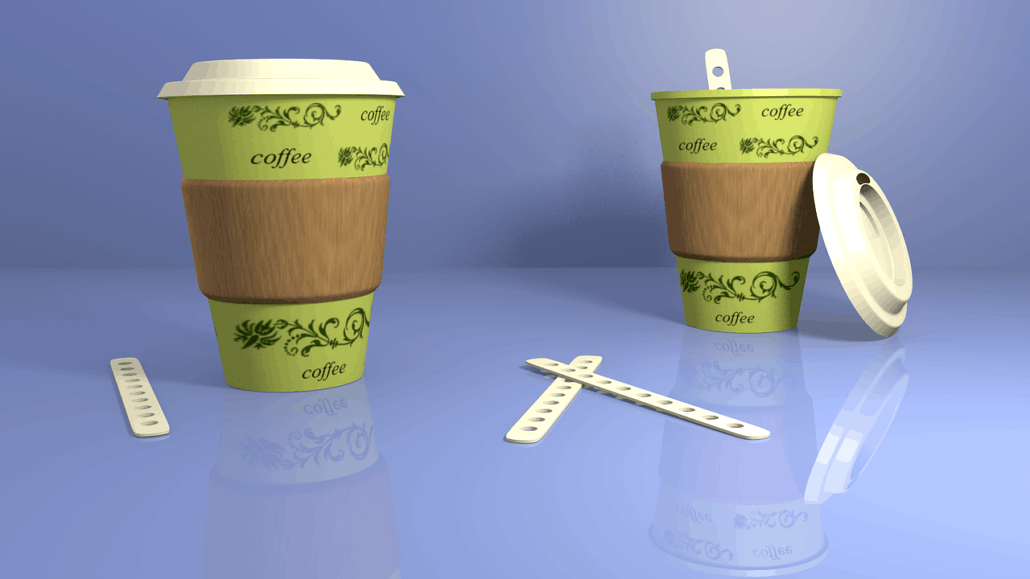
- Lactic acid based biodegradable hot melt adhesive: lactic acid based hot melt adhesives are 100% biodegradable and easy to modify to perfection with help of additives.
- Water soluble biodegradable hot glue: these bonding systems are practically not hot melts as they require resolving in water prior to application. The application does not require heat, which reduces the manufacturer´s electricity bill.
- Biodegradable hot melt beads: biodegradable beads behave like regular hot melt adhesive. They are applicable with hot melt glue machinery and equipment, yet they do not require heat to adhere to substrates.
As the technology improves and the need for biodegradable hot melt adhesives becomes ever-greater, there is room for new innovations. Therefore, even though it might seem there is no compostable hot melt for your application, it is always worth discovering the options. Do not hesitate to contact us for information on the biodegradable possibilities for your process and products.
Lately several new biodegradable glue systems have been developed that conform to the standard EN 13432. These include pressure sensitive tape and label adhesives as well as heat seal bonding solutions.
Biodegradable materials according to EN 13432
When opting for biodegradable hot melt adhesive systems, it might be worth checking whether the adhesive complies with the European standard for compostable materials, EN 13432 . The standard assesses materials based on four tests: biodegradation, disintegration, ecotoxicity and heavy metals.
So, when is hot glue biodegradable? According to EN 13432, an adhesive is compostable if:
- 90% of the total mass of the adhesive becomes CO2 within 180 days;
- The products of broken down adhesive can be used to enrich soil or are not harmful to plant growth in the area;
- The germination rate and plant biomass in the compost are more than 90% of those in the corresponding blank compost;
- The heavy metals in the product do not exceed the strict limits set in the standard.
Biodegradable hot melt adhesive manufacturers often claim their products are 100% biodegradable, however, the truth may be different. That is why checking for compliance with EN 13432 is often recommended. Note that even the standard does not guarantee the product is 100% biodegradable. However, it implies the product is biodegradable enough to pass the tests.
Discover biodegradable hot glue for your products and process
Biodegradability of hot melt adhesives is becoming more and more desired. Therefore, the systems are under continuous development, and new innovations are frequently brought to the market. Many manufacturers prefer to create biodegradable hot glue systems in cooperation with the end-user to ensure the best possible performance. If you are considering biodegradable hot melt adhesives for your applications, feel free to contact us for more information. We also offer help in getting in touch with hot melt glue manufacturers who are happy to provide you with the most suitable biodegradable hot melts.
Metallocene hot melt adhesive for maximum efficiency
Metallocene hot melt adhesive is a high performance, low temperature adhesive which is suitable for various applications within the packaging industry. The metallocene adhesives are not as common as for example EVA hot melts, but they certainly are a good alternative to other low temperature adhesives thanks to their many beneficial features which we will cover in this article.
Metallocene hot melt adhesive systems are famous for having less volume and being less dense than comparable adhesive systems. Therefore, these adhesives are a common go-to solution when the goal is a strong bond with a minimum amount of adhesive.
6 benefits of metallocene hot melt adhesives
Like many hot melts, also metallocene adhesives can be applied at a low temperature. The low temperature can result in remarkable energy savings, as high heat is not involved. The low application temperature also allows applications on delicate materials such as those common in the packaging industry.
Next to the benefits provided by the low application temperature, metallocene hot melt adhesive systems come with unique advantages. The six most important benefits are listed below.
1. No char or gel formation
One of the ultimate advantages of using metallocene hot melt adhesive is that it does not char or form gel like layers in the application equipment. Keeping the equipment cleaner, these adhesives help prevent clogged nozzles and hoses leading to less downtime and decreased need for equipment maintenance.
2. No Stringing
Metallocene adhesive systems are very special as they do not string. Hot melt stringing can ruin an application by creating a mess or compromising bond strength. Stringing is also a sign of a bad quality hot melt or faulty equipment settings. Choosing for a metallocene hot melt adhesive resolves the stringing issues.
3. Low to no odor
Hot melt adhesives are generally safe as they are a 100% solid and therefore contain no solvents. However, this does not mean that hot melts could not have an unpleasant odor. Fortunately, metallocene adhesives have low to no odor.
4. Temperature resistance
Another remarkable benefit of metallocene hot glue is its resistance to temperature extremes and fluctuation. The adhesive can resist heat up to 70°C and retains its flexibility also in temperatures below 0°C. This makes the adhesive ideal, for instance, for freezer packaging.
5. Long pot life
Due to the thermal stability of the adhesive, it has a relatively long pot life. Longer pot life is directly related to increased efficiency. The adhesive remains good in the tank of the spray equipment even during a short pause from the application. This results in less downtime.
6. Exceptional efficiency
As mentioned before, metallocene hot melt adhesives increase efficiency by minimizing downtime by keeping equipment clean. However, also other factors contribute to higher efficiency. As the adhesive is low in volume and density, a minimum amount of adhesive will suffice to create strong bonds. Compared to alternative systems, up to 40% less adhesive is needed.
Applications with metallocene hot glue
Metallocene hot melt adhesive systems are common in similar applications as EVA adhesives. Both of the glues are common when bonding cardboard or other delicate (packaging) materials. The metallocene adhesives are suitable for assembling boxes, cases and trays that are subject to temperature fluctuation. Even freezer containers can be bonded using this type of hot glue.
As the chemistry behind hot melts is generally safe, there are several products that have got the approval of the FDA. This means that those adhesives are suitable for food packaging.
Metallocene adhesive vs. EVA hot melt
When opting for a low temperature hot melt adhesive, there are generally two options. EVA (ethylene vinyl acetate) and metallocene polyolefin adhesives. Of these two EVA based adhesives are much more common as they result in strong bonds at lower cost than metallocene adhesives. However, the cost comparison can be questioned by various factors.
The initial investment of metallocene hot melt adhesive systems is higher than that of EVA adhesives. However, metallocene hot melt adhesive…
- … does not char, which keeps the equipment cleaner and reduces maintenance costs.
- … results in bonds of the same strength requiring up to 40% less adhesive, which decreases material costs.
- … has longer pot life, which is directly linked to decreased losses due to downtime.
Looking for a low temperature adhesive for packaging?
In case you are looking for a low temperature hot melt adhesive to efficiently bond cardboard and assemble boxes, cases and trays, you should consider metallocene hot melt. To get more information on the adhesive system, or get in touch with a reliable supplier, contact us.
Low temperature hot melt glue bonds and seals delicate materials
In the packaging industry in particular, delicate materials such as paper, wrap around cases, carton and cardboard require bonding in a fast paced environment. Ideally, these applications use hot melt adhesives, however, the application process tends to involve high temperatures possibly damaging the delicate materials and resulting in high energy consumption. Fortunately, it is possible to opt for a low temperature hot melt glue which helps overcome those issues.
Low temperature hot melt glue gets its name from the fact that it allows application in lower temperatures than regular hot melts. These adhesive systems are usually based on synthetic resins. The systems exist as for instance EVA (ethylene vinyl acetate) copolymers, polyolefins and other polymers.
Low temperature hot melt glue improves cost efficiency
Usually the main reason for choosing for low temperature hot melt glue systems is their cost efficiency. Using these adhesives reduces costs in three ways:
- Energy consumption: as lower temperatures are required, the energy consumption decreases, which results in a smaller electricity bill.
- Operational costs: the absence of extremely high temperatures reduce the wear and tear of the machinery, which calls for less frequent maintenance reducing operational costs.
- Material costs: low temperature hot melt adhesive systems are generally cheaper to purchase than traditional hot melts. However, this should not be taken for granted: there are always exceptions.
The financial benefits of low temperature adhesives mainly derive from the fact that the hot melt adhesive application process does not require high heat. Whereas a regular hot melt commonly requires at least 150°C, low temperature hot melt adhesive applications are possible from 90°C on.
Benefits of low temperature hot melts in packaging
The low application temperature of these hot melt adhesives brings along several benefits which support the cost efficiency. These include:
- Bonding and sealing delicate materials: the packaging industry involves many different types of materials that need bonding and sealing; some of these are temperature sensitive. In those cases, a low temperature hot melt adhesive can be used to make sure no harm is done to the delicate materials. For example, it i s wise to glue cardboard with hot melt adhesive that does not require high heat.
- Increased machinery service life: as extremely high temperatures are not involved in the low temperature hot melt glue application process, the machinery is likely to deteriorate more slowly. This also reduces the need for frequent maintenance.
- Better operator safety: even though 90°C is still a high temperature, applying low temperature adhesives involves a much smaller risk for operators to get injured by burns. The low temperature also ensures that the adhesive releases less odor during the application.
- Higher performance of packaging lines: low temperature hot melt glue is generally easy to apply and cures fast. This combined with the minimized maintenance intervals results in improved overall performance of the packaging line.
- Lower energy consumption: since the adhesive application does not require as high a temperature as regular hot melts, the energy consumption can be significantly reduced. This results in greater sustainability and contributes to reducing carbon footprint.
Technical benefits of the glue
The low temperature adhesive systems additionally have other benefits which are dependent on the formula of a specific glue system. Such benefits common for low temperature hot melt glues include:

- Excellent adhesion
- Good hot tack
- Resistance to temperature extremes
- Fast curing
- Thermostability
- No charring
- Good pot life stability
- Adhesion to porous surfaces
Contact us for more information on customized low temperature adhesive systems and find the perfect match for your application.
Specifications of low temperature hot melt adhesives
Low temperature hot melt adhesives exist as different types: EVA hot melts, polyolefin based systems and many more formulations, even pressure sensitive. These all have their specific uses. Some are designed for delicate surfaces such as paper, foam and fabric whereas others work well on cardboard and carton. Find the right type of low temperature adhesive by contacting us.
The most common applications of low temperature hot melt glue in the packaging industry include gluing cartons and folding boxes as well as sealing and bonding wraparound cases, cardboard boxes and trays. For each application and material, it is crucial to consider the specifications of the adhesive.
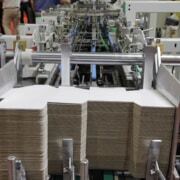
Some of the most important specifications to look at are:
- Application temperature window: generally low temperature hot melt glue can be applied at temperatures between 90° and 140°C. Temperatures above 160°C should be avoided.
- Recommended application temperature: each adhesive system also has a recommended application temperature which is a smaller range than the temperature window. Usually the recommended application temperature lies between 90° and 130°C, but it varies per product.
- Softening point: the point where the hot melt adhesive starts to soften is usually greater than 60°C.
- Application method: many low temperature adhesives are applicable using a roller or nozzle. These can be part of manual, semi-automatic or automatic application equipment depending on the product.
FDA approved hot melts
When choosing an adhesive for packaging, it is also important to look at certification and standards. As low temperature hot melt adhesives are crucial for many packaging lines, and food packaging covers a great share of the industry, FDA approval is one of the most important certificates. Fortunately, many of these low temperature hot melt glue systems have FDA approval, meaning that they are safe to use on food packaging. To avoid any inconvenience, always check with the manufacturer to what extent the adhesive is food safe.
Note: as the trend in food packaging leans towards green solutions, also biodegradable hot melt systems are available.
Find a low temperature hot melt packaging adhesive supplier
If you are looking for a low temperature hot melt adhesive for packaging, contact us and let our experts connect you with a supplier. Our network consists of adhesive industry professionals with proven track record of successful bonding. To get connected, click on the button below and share your adhesive needs with us.
Packaging industry benefits from pressure sensitive hot melt adhesive
Pressure sensitive adhesives (PSA) refer to non-reactive adhesives which form bonds of different levels. The bonding process is started by applying moderate pressure. Next to conventional solvent based, waterborne and reactive adhesives, PSA adhesives also exist as hot melt systems. The pressure sensitive hot melt adhesive (HMPSA) systems are very common throughout industries including packaging and paper.
Pressure sensitive adhesives are also known as self-adhesive systems as they form bonds when pressure is applied. In the packaging industry, tapes and films commonly make use of pressure sensitive hot melt glues. The use of these adhesives allows tapes and films to adhere to surfaces which usually are difficult to bond. For example, flexible packaging materials as well as highly varnished, coated or glossed boards benefit from HMPSA adhesives.
HMPSA for packaging tape
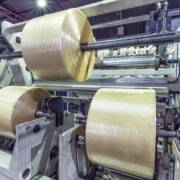
In the packaging industry pressure sensitive hot melt adhesives are common in manufacturing packaging tape as the specialty tapes market is growing. Using HMPSA adhesive for tape allows for neat and efficient application of the adhesive through numerous methods. It also provides the tape with beneficial properties such as fast formed permanent bonds, adherence to a wide variety of surfaces and excellent temperature performance. Below we will take a closer look at these three benefits.
1. Immediate bonding with pressure sensitive hot melt adhesive tape
Pressure sensitive hot melt adhesives exist as different types. The ones designed for high tack, self-adhesive tapes and films for the packaging industry commonly form immediate, destructive bonds. The bonding process starts once they are pressed against the surface to which they should adhere.
The fast adhering enables fast application which supports efficient processes as a larger entity. The packaging tapes that make use of HMPSA adhesive are suitable for instance for security closure construction.
2. Adhering to a wide variety of difficult-to-bond surfaces
Surfaces that have low surface energy are commonly difficult to bond. However, self-adhesive hot melt adhesives can help overcome the issues these surfaces may create. In packaging, such surfaces are rather common as they include glossy, high varnished and coated surfaces as well as flexible packaging material. Therefore, hot melt PSA adhesives are a considerable option when one wishes to bond these materials.
Share your HMPSA needs with us and get more information on possible solutions that bond perfectly with the surfaces in your process!
3. Excellent temperature performance of HMPSA adhesives for packaging
As many tape and film applications in the packaging industry involve temperature extremes and fluctuation, pressure sensitive hot melt adhesive systems have a design which promotes excellent performance regardless of the temperature. Some of the adhesive tapes are perfect for above room temperature applications whereas others are suitable for applications that take place in cold warehouses and storage areas.
Note that you should choose a self-adhesive tape based on the specific requirements of the application and service conditions.
How pressure sensitive hot melt adhesive works
As we defined in the beginning of this article, pressure sensitive adhesives are self-adhesive and non-reactive forming bonds under light pressure. Hot melt adhesives, for their part, come in a solid phase, take a liquid, flowable form when heated, and solidify again when cooled down.
When these two technologies are combined to pressure sensitive hot melt adhesive systems, it is possible to use them to efficiently produce industrial tapes. The adhesive is applicable through various methods including slot die, roller or spray.
Find an HMPSA adhesive supplier
Self-adhesive hot melt adhesive systems are well-known to the packaging tapes industry and there are plenty of suppliers with many years of experience in successful bonding. Due to the multitude of suppliers and available bonding solutions, choosing the right adhesive is not always a straight-forward process. Share your HMPSA adhesive needs with us and let our experts ease the process for you by connecting you with the most suitable supplier and product.
Alkali soluble labeling adhesive increases PET recyclability
Different adhesives used in the packaging industry greatly contribute to the development of greener packaging solutions. Not only is it important to consider the adhesives used in packaging itself, but also the ones used in labeling. Alkali soluble labeling adhesive solutions have been developed to increase the recyclability of containers, especially PET bottles.
The alkali soluble labeling adhesive systems allow for fast and efficient removal of labels. This enables increased, fast-paced recyclability of PET bottles. The adhesive is easy to apply and strong keeping the label in place. Once the container is ready for recycling, the adhesive can be dispersed in an alkali bath, leaving little to no residue.
Important qualifications of alkali dispersible hot melt labeling adhesive
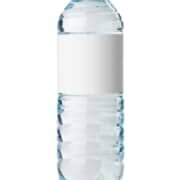
Most sustainable alkali dispersible labeling adhesives are hot melts, which means that in room temperature they appear in solid phase but become liquid once heat is applied. These adhesives are 100% solid, and do require solvents of any kind. The absence of solvents makes hot melt adhesives extremely eco-friendly.
Next to environmentally-friendliness, alkali soluble labeling adhesives should meet other requirements in order to qualify for recyclable PET bottle labeling. Meeting the strict requirements set by for instance, Returpack kft. ensures that the alkali soluble labeling adhesive supports efficient and effective recycling processes. According to these requirements, the adhesive must be soluble in alkali in 65°C (149°F). As the adhesive is alkali dispersible in a rather low temperature, the energy consumption is reduced and process sustainability is increased.
Choosing a labeling adhesive
There are different types of alkali soluble labeling adhesive systems. Choosing the most suitable for specific packaging requires considering three aspects:
- The label: the label adhesive must be suitable for bonding the label material, usually a type of plastic, although paper labels are becoming more and more common.
- The container: next to the label material, the adhesive also must be compatible with the material of the container.
- End-use environment: the environment where the product is likely to end up brings along possible performance requirements for the labeling adhesive. For example, some packaging is stored in refrigerators, and heated up in an oven, which requires temperature resistance.
Next to these aspects, the application process sets requirements for the alkali soluble labeling adhesive. Technical properties of the adhesive that should be considered include:
- Minimum application temperature: the lowest temperature in which the adhesive can be applied. A low temperature packaging adhesive should be considered if the application takes place in a cold warehouse or elsewhere in low temperature.
- Initial tack: the level of adhesion formed once the surfaces to be bonded come in touch. Low initial tack can be beneficial for some labeling applications, as it allows for moving the labels after the adhesive has applied.
- Ultimate adhesion: when the alkali dispersible adhesive is completely dry and has reached its final cure. This is important to know for further processing, storing and logistics purposes.
For more information on choosing the best labeling adhesive and suggested products, contact us! Our experts are happy to help you out.
Hot melt labeling adhesives – the most common solution for PET bottles
The most common labeling adhesive chemistries include water based and hot melt systems, the latter being the most popular. Hot melt adhesive are easy to store and apply with the right equipment and they do not require any solvents.
Furthermore, hot melt labeling adhesives exist for different application and service temperature ranges with varied chemical resistant properties. A hot melt adhesive can water or alkali soluble, which allows it to be used on recyclable PET bottles.
Interested in alkali soluble labeling adhesive?
Since many factors must be considered when choosing a labeling adhesive, it is a job involving many parties including the product manufacture, container manufacture and label producer. In case you are interested in a hot melt alkali soluble labeling adhesive, contact us! We are determined to connect you with the adhesive supplier who can provide the best possible solution.
Step towards sustainability with bio-based packaging adhesive
In the packaging industry, sustainability is becoming more of a norm rather than something special offered by a small selection of companies. Environmental legislation and standards, the environmental responsibility of manufacturers as well as increased awareness of companies and consumers all have encouraged the development of bio-based packaging adhesive systems which make up a greener bonding solution with reduced carbon footprint.
Bio-based packaging adhesives are those that consist partially or entirely of biomass derived from renewable sources. These adhesives increase the recyclability of packaging while remarkably reducing its environmental impact.
Benefits of bio-based packaging adhesive solutions
Most of the bio-based packaging adhesive systems are hot melt adhesives, meaning that they come in a solid phase, usually in a form of pastilles, and are brought to liquid phase by applying heat, hence the name hot melt. These adhesives are significantly greener than their conventional alternatives, nevertheless, they come with a range of other benefits, too.
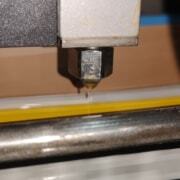
The benefits of bio-based hot melt adhesives include:
- Excellent performance: the performance of the packaging adhesives is not affected by their bio-based content other than in regards to thermal stability.
- Temperature resistance: bio-based hot melt glues are resistant to temperature extremes making them suitable for packaging experiencing conditions from ovens to freezers. This remarkably broadens the range of possible applications of these adhesives.
- High speed production: many bio-based hot melt adhesives have a very short open time which requires fast processing. However, this also allows for speedy production.
- Fast curing: these adhesives cure fast, which supports fast paced production.
- Easy to switch to: in most of the cases bio-based hot melts can be applied using the same equipment as for applying fuel-based hot melt adhesives. This makes shifting between hot melt systems less costly.
Applications realized with ecological hot melt adhesives
The number of possible uses of bio-based packaging adhesive systems is ever-increasing, as the demand for these greener bonding solutions grows. Currently bio-based hot melts are used for example for:
- Tray forming
- Top and bottom case sealing
- Carton sealing
- Wraparound carton sealing
The bio-based adhesives are continuously being researched and improved, and new applications are developed all the time. In case you are interested in switching to bio-based packaging adhesives, but are not sure whether it is realistic for your application, contact us: our experts are happy to take on the challenge of finding the most suitable eco-adhesive solutions!
EN 16785-1 evaluates bio based content
When looking at bio-based adhesives, the European Norm EN 16785-1 plays an important role. This standard verifies biobased content in products in two ways: by radiocarbon analysis and elemental analysis according to CEN/TS 16440 for Carbon- 14 component.
EN 16785-1 defines biobased as “derived from biomass”. The bio-based packaging adhesives are those partially or entirely made of materials derived from biomass. The standard covers a wide range of products due to the fact that it is applicable to solid, liquid and gaseous compositions which contain carbon.
Find a bio-based packaging adhesive supplier
Although bio-based adhesives are rather new to the market, there are companies with proven track record of successful bonding for decades, that have recently added bio-based adhesives to their portfolio. Contact us, and let our experts connect you with the most suitable bio based packaging adhesive for your application.


